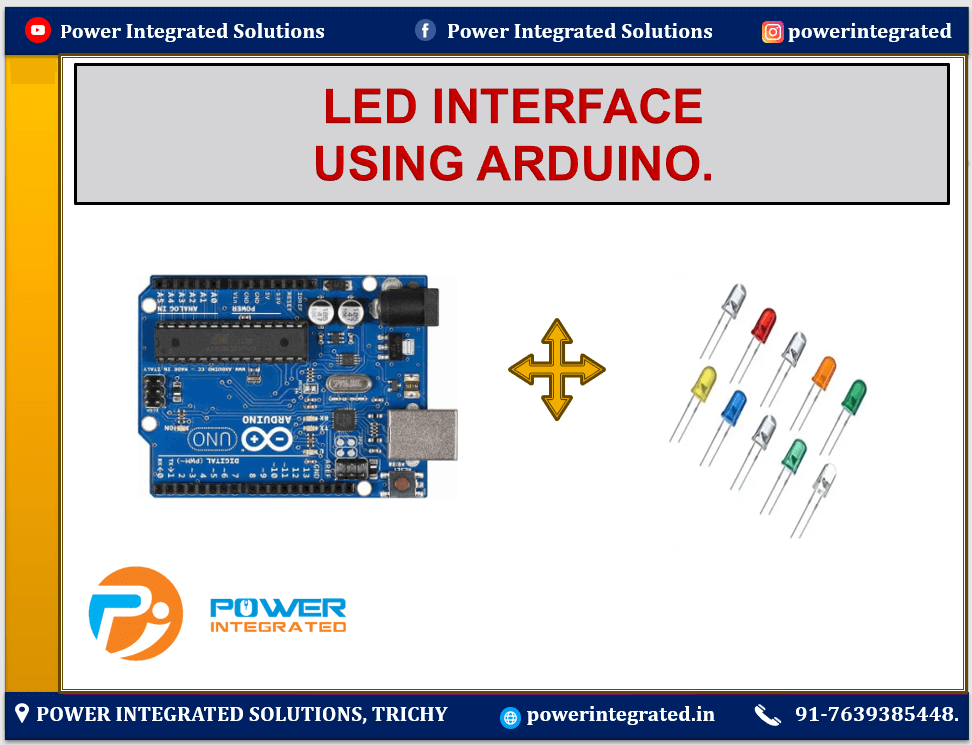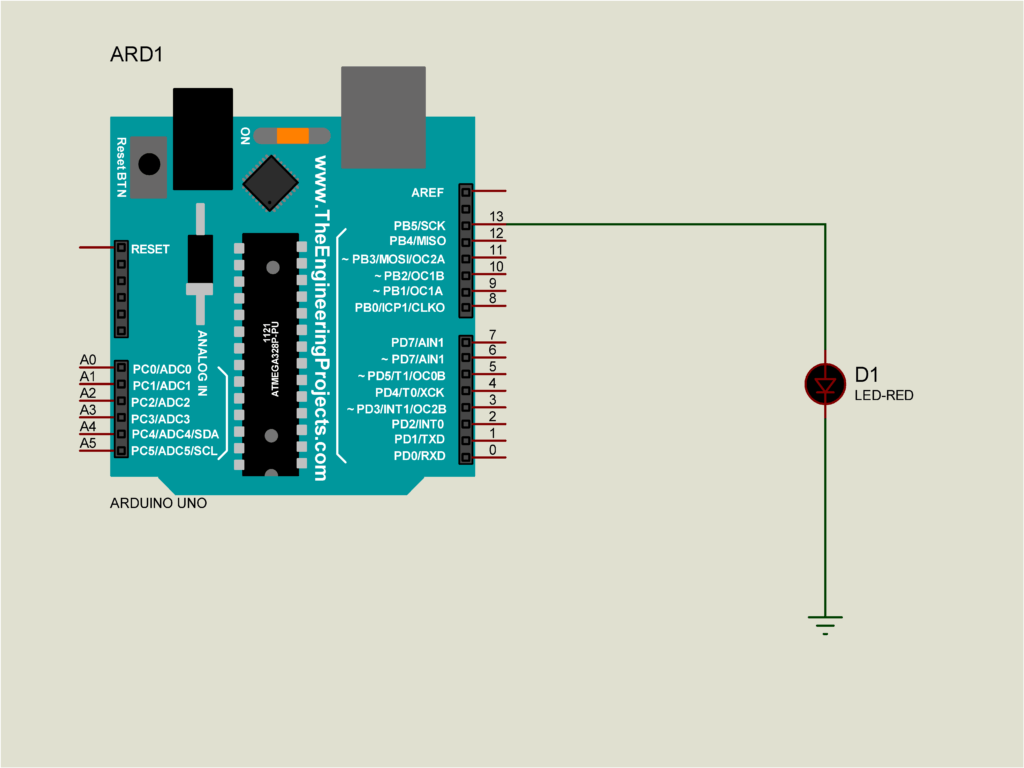SINGLE LED BLINK

💡 LED Interface with Arduino – Short Note
Overview:
An LED (Light Emitting Diode) is a basic output device used with Arduino to visually indicate status, signals, or logic. It glows when current flows through it in the forward direction.
⚙️ Required Components:
Arduino Uno (or any board)
LED (any color)
220Ω resistor (to limit current)
Breadboard and jumper wires
🔌 Circuit Diagram:

LED anode (long leg) → Arduino digital pin (e.g., pin 13)
LED cathode (short leg) → 220Ω resistor → Arduino GND.
📝 Sample Arduino Code:
🧠 Key Points:
Always use a resistor to prevent LED damage.
digitalWrite(ledPin, HIGH)turns ON the LED.LEDs are polarity sensitive (must be connected the right way).
Multiple LEDs can be connected to different pins for patterns.
📞 For More Details & Project Support:
Power Integrated Solutions
Networks | Electronics | Home Automation | Water Automation | IoT | PLC | Embedded | DBMS
📍 Location:
10A/3, Radhakrishnan Colony,
Sasthri Road, Tennur,
Tiruchirappalli, Tamil Nadu – 620017
📧 Email:
📱 Phone / WhatsApp:
+91 76393 85448
+91 82488 85959
🌐 Let’s Build the Future with Innovation in Education & Technology!
